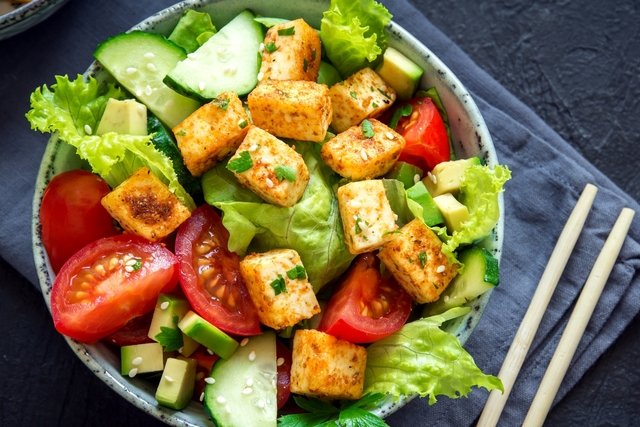The Japanese diet is a type of diet that consists of eating few meals per day in small portions. It eliminates the consumption of dairy products, sugar, fatty and processed foods.
This diet is rich in fresh vegetables, soy, fish and seafood that promote optimal functioning of the intestines. It promotes elimination of excess fluid from the body and helps control hunger, promoting weight loss.
However, there are no current studies that prove the benefits of the Japanese diet for weight loss. Therefore, when deciding to go on a weight loss diet, you are advised to consult a registered dietitian who will assess your individual health status and outline a diet according to individual nutritional needs.

How to start
The Japanese diet consists of eating only 3 meals a day: breakfast, lunch and dinner. These meals are mainly made up of fresh vegetables, eggs, fish, soy and seafood.
It is also important to drink at least 2 liters of water per day to stay hydrated and to help manage hunger. You should also drink unsweetened teas throughout the day, such as green tea, matcha tea and black tea, for example.
Special considerations
Because it is very restrictive and consists of a low calorie intake, this diet can cause dizziness, weakness, general malaise, changes in blood pressure and hair loss if it is maintained for more than 7 days.
This diet is not recommended for pregnant or breastfeeding women. It should also not be maintained by children or anyone with a history of eating disorders, such as binge eating, anorexia or bulimia.
There are no current studies that prove the benefits of the Japanese diet for weight loss. Therefore, when deciding to go on a weight loss diet, you should instead consult a registered dietitian who will assess your health status and formulate a diet according to your individual nutritional needs.
What to eat
The foods that can be consumed during the Japanese diet are mainly eaten in their natural forms and require little processing. These foods include:
- Fish and seafood, such as tilapia, sea bass, boyfriend, shrimp, squid or octopus;
- Soy and derivatives, such as soy, tofu, miso, natto or edamame;
- Some grains, such as rice and pasta;
- Fresh fruits, such as papaya, tangerine, orange, kiwi, pineapple or banana;
- Vegetables, such as spinach, cabbage, bok choy, radish, pickled vegetables, peppers, tomatoes, bean sprouts or eggplant;
- Seaweed, which can be consumed raw or cooked;
- Drinks, including water and teas.
Although they are not part of the Japanese diet, small amounts of red meat, chicken and eggs can be included in this diet.
7-day meal plan
The following table outlines a 7-day meal plan for the Japanese diet:
This is just a model of the Japanese diet that varies according to each person's preferences. As it is a very restricted eating style, the Japanese diet should be followed for a short period of time and, preferably, with the help of a nutritionist.
Foods to avoid
Foods that should be avoided in the Japanese diet are mainly:
- Dairy products, such as milk, yogurt, butter and cheese;
- Fatty cuts of red meat, like rump steak, flank steak, or lamb
- Excess fat, such as margarine, soy oil, sunflower oil, and ready-made sauces;
- Foods with sugar, such as breakfast cereals, cereal bars, sweets in general and soft drinks.
In the Japanese diet, it is also recommended to avoid the consumption of processed foods, such as fast food, frozen meals and ice cream, as these types of foods can hinder the weight loss process.
